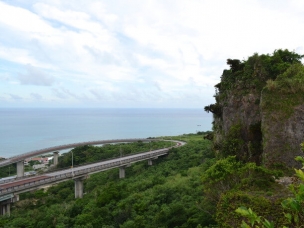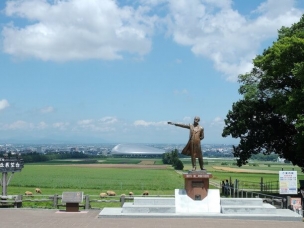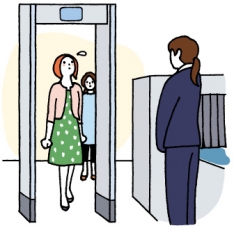A Place of peace that remembers the Battle of Okinawa!

In the southern part of Okinawa’s main island is Itoman City. Here there are stunning views of the eastern coastline. Located here facing the Pacific Ocean is the Peace Memorial Park(平和祈念公園).
Many people have visited here on a school trip and later came back as an adult.

The park has well-manicured lawns and Okinawan trees that have been planted in an orderly manner.
Even if a lot of people are walking around you still feel a somewhat serene atmosphere.
It is a large park divided into several zones. One of the most popular areas is the zone of peace where there the Memorial Hall (平和祈念堂) and the Okinawa prefectural Peace Memorial Museum (沖縄県平和祈念資料館)are located. If you visit here these are both worth seeing.
There are many exhibits in the Museum so please take your time exploring.
By touching on the culture of Okinawa and the history of the Battle of Okinawa, we can better understand and mourn those who lost their life.
Meet the “butterflies of the soul”
From the entrance plaza of the Peace Memorial Park there are stairs on the north side leading to the Okinawa Peace Memorial Chapel (entrance fee is 450 yen) The chapel opened in 1978. It has a 40-foot high peace statue that is a symbol of peace.
There is also a Museum with various peace-themed paintings on exhibit.

Also, if you go further down the path you will come to the “Butterfly Garden”
It is Japan’s largest butterfly breeding garden.
There are countless Ohgomadara (big black and white patterned butterflies) inside the greenhouse.
You can see the butterflies dancing gracefully, as well as the golden pupas.It is said that the souls of those that died dwell in the butterflies.
You can lose track of time as you watch the butterflies slowly fluttering and dancing in the subtropical Okinawa air.


There is a panoramic view from the observatory!
Located in the Peace Memorial Park there is an observation room on the top floor of the Hiroshima Peace Memorial Museum. It overlooks the whole park and the blue Pacific Ocean stretching out in a panoramic background.
Inside there is a map of the world. It looks out from Asia and the South Sea Islands in each direction 360 degrees. Using Okinawa as the center point it marks the distance from Okinawa to other locations around the world. In other words, it gives you the perspective the southern part of Okinawa’s Itoman-city has of the world.
From the exhibition room (admission 300 yen) you can learn about the culture of Okinawa and the history of the war. Okinawa became a battlefield. You can get a sense of why it is called the “keystone of the Pacific.”
The “Cornerstone” of peace.
It takes about one hour to walk around the entire Peace Memorial park.
Please try to walk slowly around the square and appreciate the experience, especially the cornerstone of peace.
The cornerstone of peace, without discrimination of nationality or whether military personnel or civilians, is a monument to the people who died in the Battle of Okinawa. Their names are engraved here. As of June 2015 more than 241,336 people’s names have been engraved.
For every carved name, one’s heart goes out to those who lost their life and the
misery of war can be felt.
The monuments are lined up like waves that spread peace to the world.
Lots of stone monuments facing out to sea are a beautiful symbol for peace yet a sad reminder of the war.

- There is plenty of free parking (spaces for 546 passenger cars). In addition, there is electric vehicle charging facilities available free of charge.
- Entry of the Peace Memorial Museum permanent exhibition room is allowed until 4:30p.m.
- Free is WI-FI in the information office. A free park bus is available for 100 yen.
The Peace Memorial Park is still a big part of Okinawa’s culture. It is often used by the locals for walking. The park is open until 10p.m. each night. It is recommended to walk at dusk when the sun light is less intense. In December, there is also a "night of lighting-up" event.
- Spot name(Ja)
- 沖縄県営平和祈念公園
- Address
- 444 Mabuni Itoman-city Okinawa
- Address(Ja)
- 沖縄県糸満市摩文仁444
- Telephone
- 098-997-2765
- Price
- free
- Open
- By branches
- Close
- 7 days a week
- Parking lot
- Yes
- Note
- HP : Http://Kouen.Heiwa-irei-okinawa.Jp/






